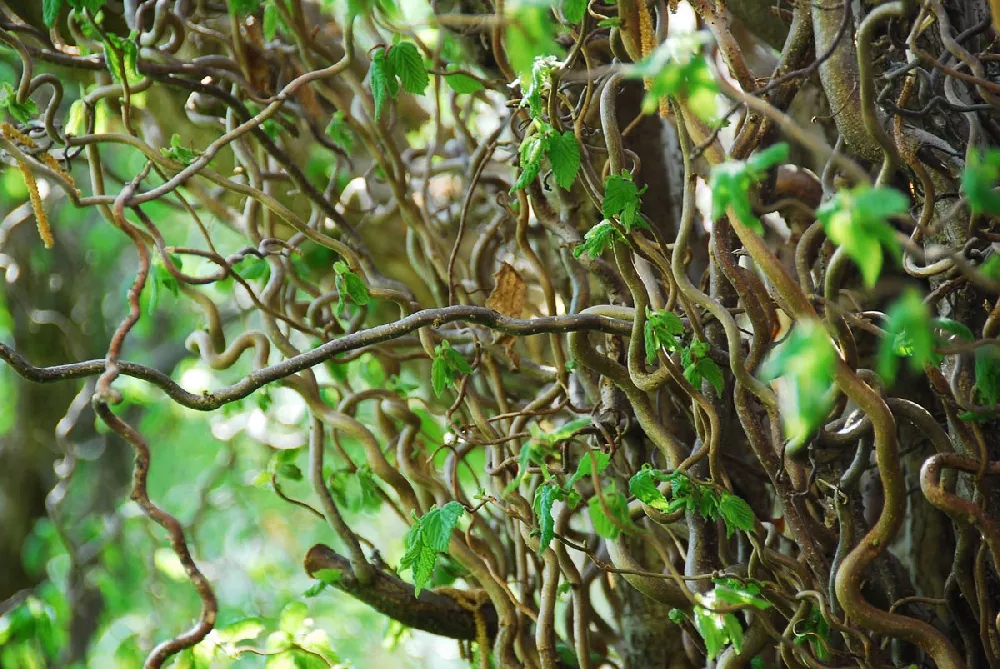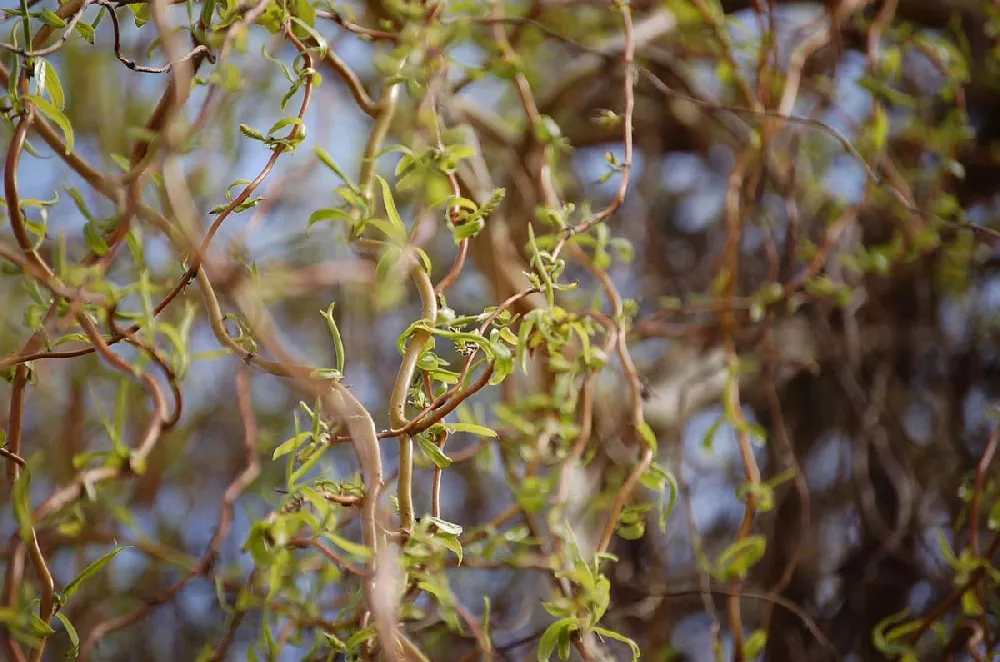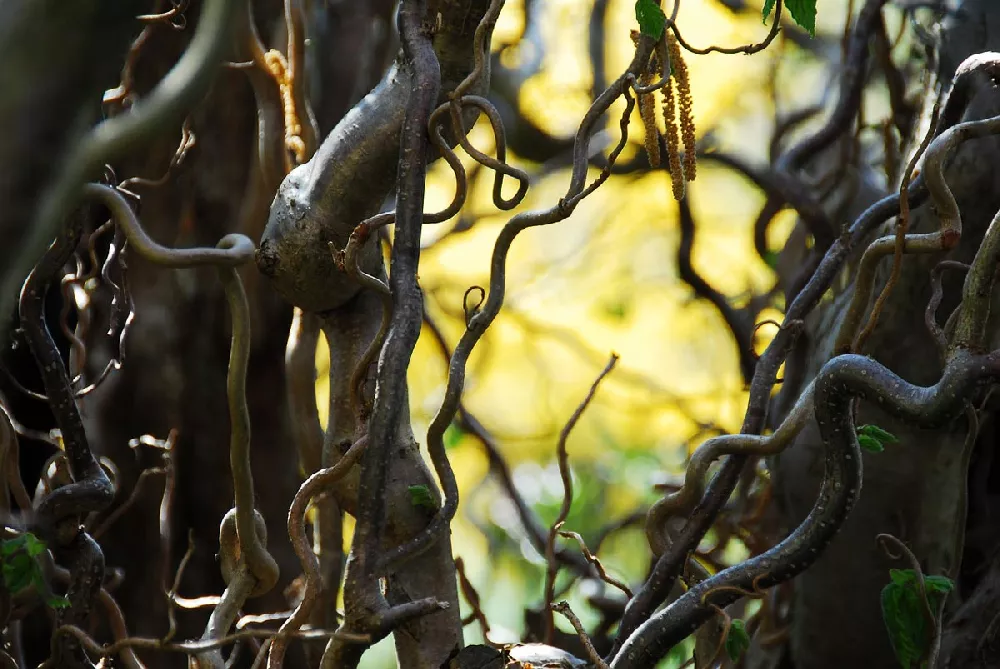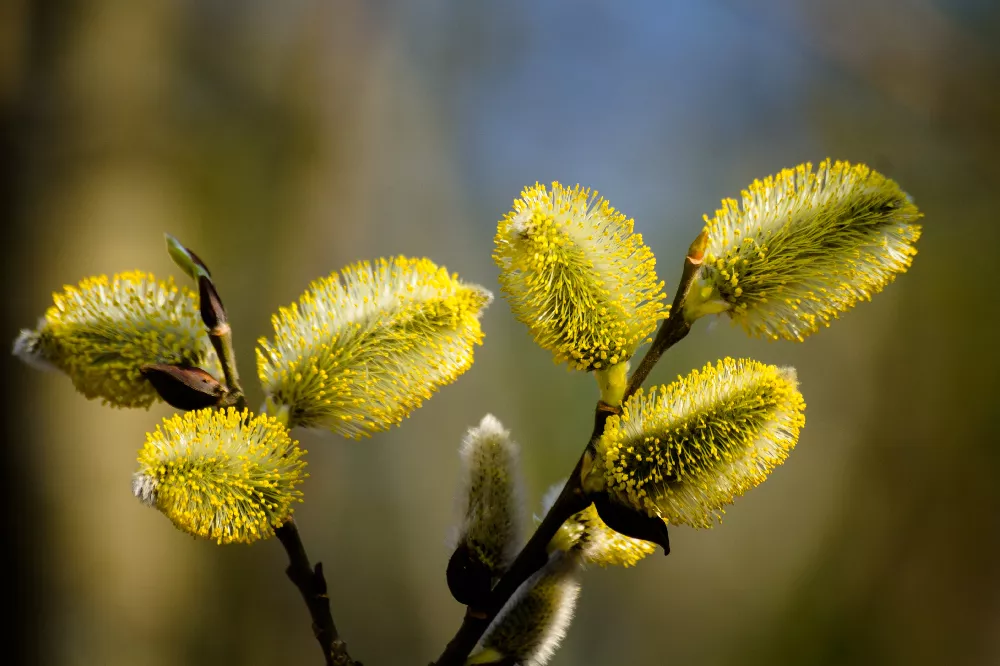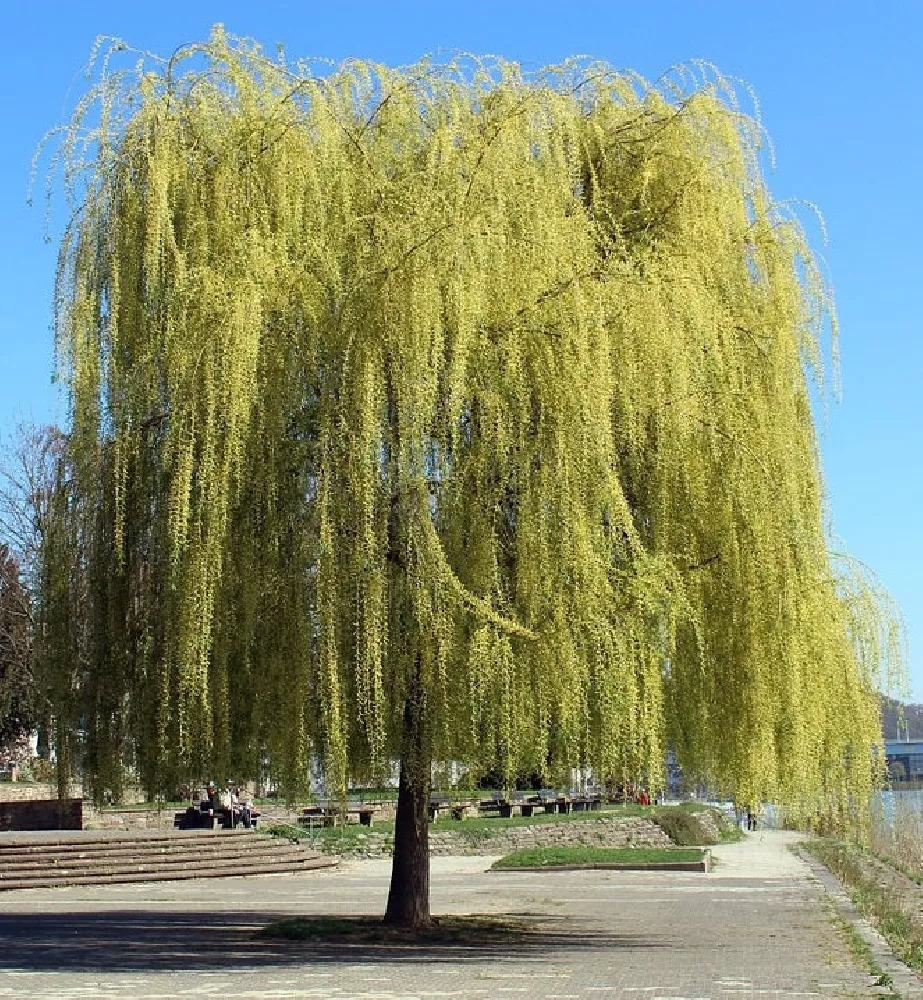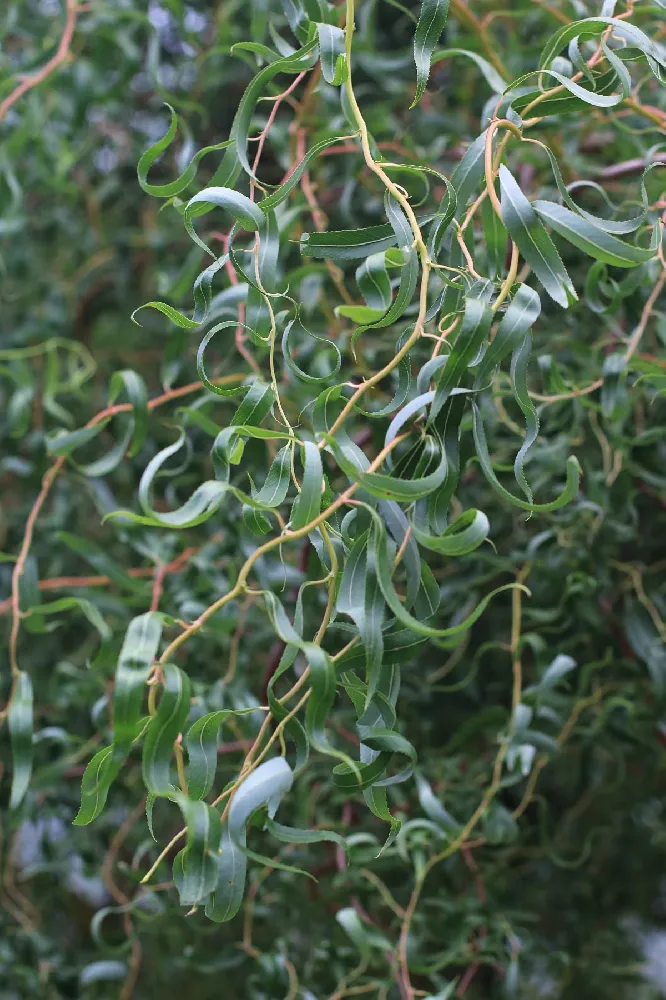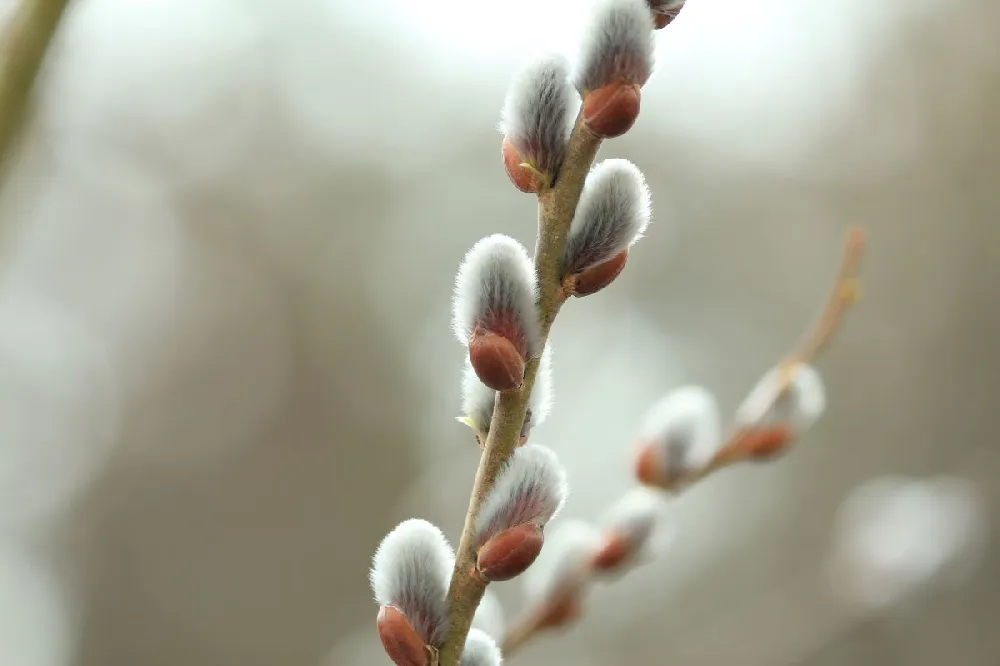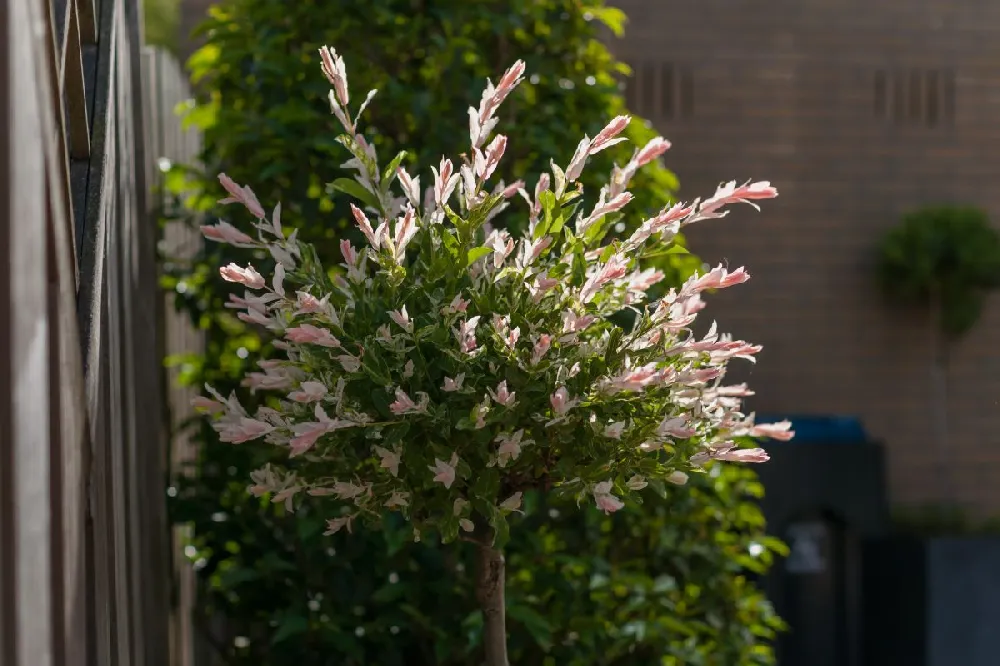- Home >
- Willow Trees >
- Corkscrew Willow Tree
Corkscrew Willow Tree for Sale - Buying & Growing Guide
- Ships in 1-2 days
- 1-Year Warranty Eligible
- Pots or accessories are not included unless specified in the product options.
Shipping Details:
Once your order is shipped, you’ll receive an email with a tracking number and estimated delivery date. Most orders ship immediately, but some items are seasonal and may only ship in spring or fall. These products are noted on the website.
There are many good things to be said about the corkscrew willow tree, Salix matsudana, but one of the best ways to describe it is to say that it is, well, quirky. That quirkiness becomes apparent as it grows and its branches assume the corkscrew shape that gives this tree its name — twisting and turning so that, in winter, when the orange-yellow branches are in stark relief, it gives a punch of gnarly texture to your garden or landscape. It's beautiful during other seasons, too, with springtime buds followed by delicate summertime leaves that make it a good choice for shade. In autumn, the leaves turn a vibrant yellow, followed by the spectacular winter display. Here are a few more reasons why you need a corkscrew willow in your garden:
- The corkscrew willow is deer-resistant and not susceptible to disease or pest infestations.
- It can be cut back hard in winter to encourage brightly colored new twisted growth.
- It is cold-hardy down to -20 degrees Fahrenheit; it grows throughout much of the U.S.
Plant Care
Sunlight

Corkscrew willows thrive in partial to full sun — at least four hours of direct light a day.
Watering
Water established plants once a week, giving them roughly 1 inch of water each time.
Fertilizing

In spring, use a general-purpose, slow-release fertilizer formulated for landscape trees and shrubs.
Planting and Care
Planting instructions
Choose a site for your corkscrew willow that gets at least four hours of sun a day, in soil that drains well. Site your willow away from underground utilities such as septic pipes, since willow roots can be invasive. Unpot your sapling and tease out any encircling roots, which can girdle the tree and slowly kill it. Dig a hole that’s slightly shallower than the root ball and about three times as wide. Place the tree in the hole, spreading out the roots. Holding the tree upright and steady, fill in around it with topsoil. You should end up with the root flare (where the trunk meets the roots) slightly above the soil level. Water thoroughly. Apply a 2- to 3-inch layer of mulch around the root zone to conserve moisture and hinder weed growth.
Watering and nutrients
When newly planted, water your corkscrew willow several times a week, so that the soil around the root zone never dries out. After the first year, once the roots are more established, you can taper back watering to once a week, giving your tree about an inch of water at a time unless you receive that amount in rain. Corkscrew willow trees are not heavy feeders, but you can encourage growth by giving yours a balanced fertilizer such as a 10-10-10 formula in early spring.
Pollination
Many Salix cultivars, such as this one, are hybrids, and do not breed true to form. They have small, inconspicuous flowers, and are more usually propagated by taking cuttings from a mature tree and growing them in potting soil.
Pruning
New growth on your corkscrew willow is more likely to show the curling and twisting that is indicative of this cultivar, so it benefits from a late-winter pruning. It can, in fact, be pollarded, which is an ancient practice of cutting back all old growth about 8 feet above the ground back to the central trunk annually and allowing new growth to sprout vigorously from the cut ends. If that seems too extreme, you can leave it unpruned or prune lightly to control shape and size.
Pests and diseases
Pests that prey on willows include aphids, various caterpillars, gall mites, and willow scale insects. A healthy tree should be able to handle minor infestations with little problem. Consider releasing beneficial insects in the vicinity of your tree, such as ladybugs, which eat aphids. Diseases of the corkscrew willow include anthracnose, rust, and crown gall. Prune out any galls you see on the branches, and clean up any leaf litter around the trunk to help avoid fungal diseases.
Achieving maximum results
WIllows are not difficult trees to grow, and they need little care once they are established. The best way to ensure success for your corkscrew willow is to site it carefully, away from both underground and overhead utility wires, pipes, or other infrastructure. You’ll also want to leave some space between your willow and driveways, walkways, and roads, so that there’s little chance of the tree’s extensive root system causing damage. Water your tree regularly when it is young, while the roots are still shallow. Once it has established itself, you can tell if it needs feeding by checking the leaves — if they are pale and showing little growth, fertilize your tree in spring.
FAQs
Where do corkscrew willows grow best?
How quickly does a corkscrew willow grow?
Willows are fast-growing plants and should put on a foot or more of new growth a year, especially if they are pruned back sharply in the late winter. A mature corkscrew willow will grow to a height of 20 to 30 feet with a mature width of 20 to 30 feet.
I've heard I can cut willows back to the ground. Is this true?
Yes. It's called coppicing, and, like pollarding, it's a technique that horticulturalists use to stimulate new growth. A coppiced willow should be cut back every three to five years and will assume a multi-trunk shrub form. Keep in mind that if your tree is coppiced, it will not reach the mature height that an unpruned tree can reach.
Compare Similar Products
You can't add more Product Name - Product size to the cart.
OK